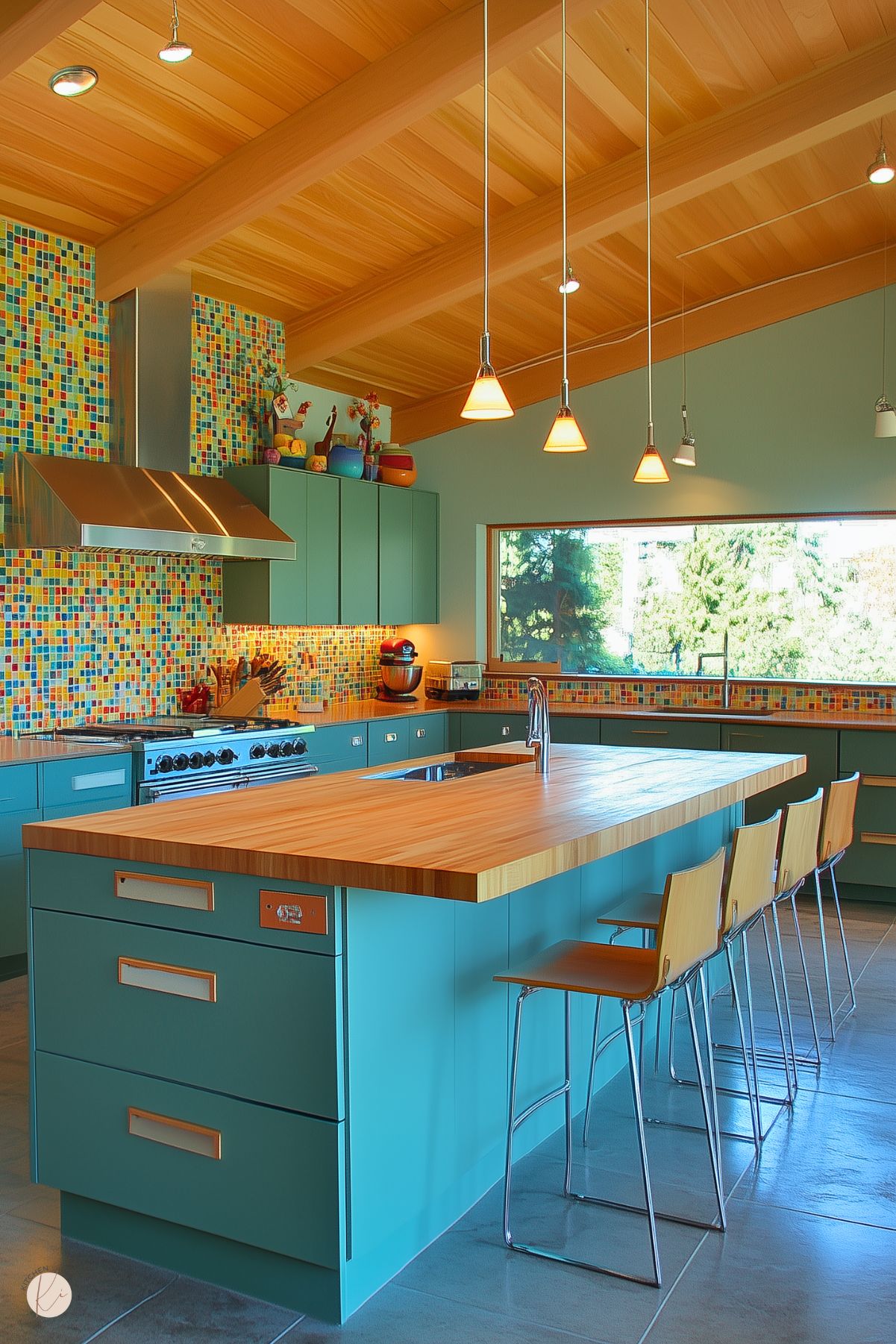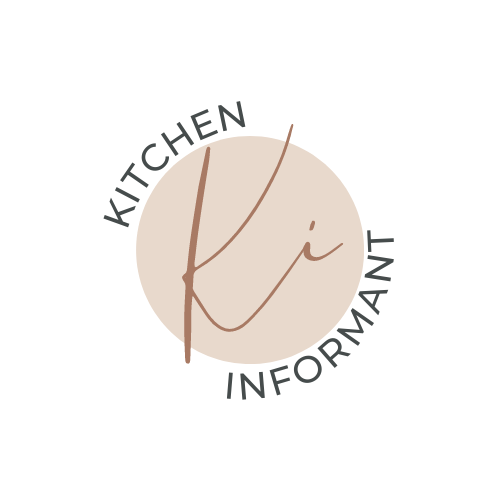Bold colors can breathe new life into any kitchen, making it feel fresh and inviting.
Choosing rich cabinet hues like teal, mustard yellow, or deep green can transform an ordinary space into a stunning focal point.
These shades add personality and warmth, creating a kitchen that reflects personal style and encourages family gatherings.

Many homeowners are embracing the trend of bold cabinet colors to create an eye-catching contrast in their kitchens.
Pairing vibrant lower cabinets with neutral upper cabinets is a popular choice, allowing for a striking yet balanced look. This approach not only elevates the design but also enhances the overall ambiance of the space.
As design trends evolve, incorporating bold cabinet colors can be an exciting way to showcase creativity in home decor.
By selecting the right shades, anyone can elevate their kitchen into a trendy, modern space that feels both welcoming and stylish.
The Impact of Cabinet Color on Kitchen Aesthetics

Choosing the right cabinet color can greatly influence the overall look and feel of a kitchen. Different colors affect mood, perception of space, and how well everything coordinates together.
Understanding Color Psychology
Color psychology plays a significant role in interior design.
Colors evoke emotions and can change the atmosphere of a room.
For instance, soft blues and greens are known for creating a serene and calm environment.
These colors can make a kitchen feel more inviting.
On the other hand, bold colors, like deep reds or rich greens, can energize the space.
They make a strong statement and can reflect the homeowner’s personality.
It’s essential to consider how a color makes one feel before making a decision.
Cabinet Colors and Space Perception
Cabinet colors can also affect how spacious a kitchen feels.
Light colors like white or pale yellow can make a small kitchen appear larger and more open. They reflect light well and create an airy atmosphere.
In contrast, darker colors, such as navy blue or charcoal, can give depth to the design.
They might make a large kitchen feel more cozy but may also make a small space seem even smaller. Thus, understanding the size of the kitchen is vital before choosing a cabinet color.
Coordinating with Countertops and Backsplashes
For a well-designed kitchen, coordinating cabinet colors with countertops and backsplashes is crucial.
It’s important to choose shades that complement each other to create visual harmony.
For example, pairing light cabinets with dark countertops can create an appealing contrast. This combination draws the eye and provides depth to the design.
Similarly, using a bold cabinet color with a neutral backsplash can highlight the cabinets without overwhelming the space.
Tips for Coordination:
- Use a Color Wheel: Identify complementary colors.
- Test Samples: Place color samples next to your countertops and backsplashes to see how they look together.
- Keep It Balanced: Avoid too many bold colors to maintain a unified look.
Choosing the Right Palette

Finding the perfect color palette for kitchen cabinets can change the entire feel of the space. A well-chosen color scheme not only showcases personal style but also enhances the kitchen’s overall design.
Bold Color Schemes for Different Styles
When choosing bold colors, it’s essential to consider the kitchen’s style.
For a modern kitchen, shades like deep navy or black can add a sleek touch.
In contrast, a farmhouse style kitchen might benefit from softer bolds like sage green or a rich burgundy.
Using vivid hues can also define areas within an open layout.
For instance, choosing a bright color for an island can make it a focal point without overwhelming the entire room.
Texture also plays a role; pairing bold colors with matte or glossy finishes can enhance depth.
Contrasting Colors for Vibrant Interiors
Using contrasting colors can create a dynamic and energetic atmosphere.
For example, pairing bright yellow cabinets with a deep charcoal wall creates a striking visual. This technique works well in contemporary kitchens or spaces that aim to feel lively.
Incorporating contrasting elements extends beyond paint.
Complementary fixtures, such as brass handles or modern lighting in black, can create a cohesive look.
It’s crucial to balance bold contrasts with softer accents, like white countertops or light-colored backsplashes, to prevent the space from feeling chaotic.
Monochromatic Themes for a Unified Look
A monochromatic color scheme can bring a sense of calmness to a kitchen.
This approach involves using different shades of the same color.
For instance, a gray kitchen can have light gray cabinets paired with darker gray countertops and walls.
This style creates a sophisticated and seamless appearance.
To add interest, consider varying the textures of surfaces—matte paint against a glossy backsplash can keep things visually appealing.
Accessories, like bright dishware or plants, can also be incorporated for pops of color without disrupting the monochrome theme.
Preparation for Cabinet Transformation

Getting ready for a cabinet transformation is crucial for achieving the best results. Proper preparation helps ensure the paint sticks well and the finish looks great. Here’s what to consider.
Tools and Materials Needed
Before starting, gather the following tools and materials:
- Screwdriver: To remove hardware and cabinet doors.
- Cleaning supplies: Use a degreaser or a mixture of soap and water to clean surfaces.
- Sandpaper: Fine-grit sandpaper (120-150 grit) is essential for smoothing surfaces.
- Primer: A quality primer helps paint adhere better.
- Paint: Choose a durable cabinet paint that matches the desired color.
- Brushes and rollers: Use high-quality brushes for edges and rollers for larger surfaces.
- Drop cloths: Protect floors and countertops from spills and drips.
Gathering these items ahead of time makes the process smoother.
Steps to Prime Cabinets for Painting
To prime cabinets, follow these steps:
- Remove hardware: Take off handles and knobs using a screwdriver.
- Clean surfaces: Wipe down cabinets with a degreaser and cloth. Ensure all grime and grease are gone.
- Sand the surfaces: Lightly sand the cabinet doors and frames. This helps the primer stick better.
- Dust off: After sanding, remove any dust with a clean cloth or vacuum.
- Apply primer: Using a brush or roller, apply a thin coat of primer. Make sure to cover all areas evenly.
- Dry time: Allow the primer to dry completely, as per the manufacturer’s instructions.
These steps can help achieve a smooth finish for the paint, enhancing the overall transformation.
Painting Techniques and Tips

Painting kitchen cabinets can seem challenging, but with the right techniques, achieving a professional look is possible. It’s all about preparation and knowing how to apply the paint properly to ensure durability and style.
Applying Paint for a Professional Finish
Preparation is key to a flawless finish.
Start by cleaning the cabinets thoroughly to remove grease and dust.
Sanding the surfaces lightly helps the paint adhere better.
Use a primer suitable for the cabinet material. This step ensures the paint lasts longer and the color looks vibrant.
For the paint application, a high-quality paintbrush or a foam roller works best.
A brush provides more control for edges and corners.
Apply paint in thin layers. This method prevents drips and uneven surfaces.
Allow each coat to dry completely before adding the next. This process typically involves at least two coats to achieve the desired color depth.
Don’t forget to seal the paint with a clear topcoat. This protects the finish and makes cleaning easier.
Drying Time and Proper Ventilation
Proper drying time is crucial.
Each coat of paint should dry according to the manufacturer’s recommendations. This period can vary based on humidity and temperature. Generally, expect at least one to two hours between coats.
Ventilation also plays a vital role in the painting process.
Proper airflow helps the paint dry evenly and reduces the risk of moisture being trapped, which can lead to issues like bubbling or peeling.
Open windows and use fans to improve air circulation.
Consider wearing a mask to avoid inhaling fumes, especially if working with oil-based paints.
Incorporating New Hardware

Choosing new hardware can significantly enhance the look and functionality of bold cabinet colors. The right knobs and pulls not only add style but also tie different elements of the kitchen design together.
Selecting Knobs and Pulls That Complement Cabinet Colors
When selecting knobs and pulls, it’s important to consider the color and finish that best match the cabinets.
For example, if the cabinets are painted in a deep navy, brushed brass or polished nickel can offer a striking contrast.
Tips for Selection:
- Material Choices: Consider using materials like metal, wood, or ceramic based on the overall kitchen style.
- Style Unity: Choose hardware styles that reflect the kitchen’s theme—like modern, rustic, or traditional.
- Finish Coordination: Safeguard against clashing finishes by selecting hardware that complements existing kitchen elements, like faucets or light fixtures.
Installing Hardware for Enhanced Functionality
Installing new hardware is not just about aesthetics; it’s also about improving usability.
Properly installed knobs and pulls can make opening cabinets and drawers much easier.
Installation Essentials:
- Height Matters: For cabinets, hardware should typically be placed 2.5 to 3 inches from the bottom of the door. For drawers, center them horizontally for a clean look.
- Spacing: Ensure that pulls are evenly spaced on larger doors for a balanced appearance.
- Ergonomics: Choose handles that feel comfortable in hand, particularly for frequently used cabinets.
By focusing on these details, one can create a functional and visually appealing kitchen space.
Maintaining Boldly Colored Cabinets

Keeping boldly colored cabinets looking fresh and vibrant requires some specific care.
It is important to know how to clean them properly and to maintain their color over time. Here are some essential tips to help achieve that.
Cleaning Tips for Painted Surfaces
To clean painted cabinets, start with a gentle approach.
Use a soft cloth or sponge and a mild dish soap mixed with water. This solution helps remove dirt and grease without harming the paint.
Avoid using harsh chemicals or abrasive scrubbers, as these can damage the finish.
Rinse the cloth with clean water and wipe down the surfaces to remove any soap residue.
For tougher stains, try a mixture of vinegar and water.
This natural cleaner is effective yet safe for painted surfaces. Remember to always test any cleaner on an inconspicuous area first to ensure it does not affect the color.
Regular Upkeep to Preserve Color Vibrancy
To keep cabinet colors vibrant, regular upkeep is essential.
Check for any fading that may occur from sunlight exposure. If needed, applying a clear coat sealant can help protect the color from UV damage.
It is beneficial to wipe down cabinets weekly to prevent dirt buildup. This helps retain their brightness.
Additionally, moisture can cause paint to peel or discolor, so ensure the kitchen is well-ventilated.
If there are chips or scratches, consider touch-up paint in the same shade.
This small fix can greatly improve the appearance and extend the life of the cabinets. Just be sure to apply it carefully for a seamless look.
Future Trends in Kitchen Cabinet Colors

As styles evolve, kitchen cabinet colors are moving away from plain white.
Bold hues are becoming more popular. This change brings warmth and personality to kitchens.
One exciting trend is the use of two-tone cabinets.
Combining darker lower cabinets with lighter upper ones adds depth. This contrast creates visual interest and makes spaces feel more dynamic.
Another rising trend features natural-inspired colors.
Shades like deep greens and rich blues are gaining popularity. These tones connect kitchens to nature and bring a calming effect.
Stained cabinetry is also making a comeback.
It highlights the natural grain of the wood while being more forgiving of scuffs and marks. This option combines beauty with practicality.
Here is a simple list of trending colors for 2025:
- Dark Blue: Adds a luxurious touch.
- Emerald Green: Brings drama and sophistication.
- Burnt Orange: Adds warmth and energy.
Kitchen designs are embracing bold finishes as well.
Mixing different materials and colors can make the space feel more inviting.


















